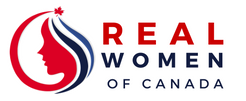REALity January 2019
Canadian and U.S. Drug Policies: A Contrast
Canada and the U.S. have very different policies in regard to the drug problems plaguing both countries.
Canadian Drug Policy
The Trudeau government has adopted the approach to drug policies called “Harm Reduction”. This policy is based on the notion that drug addicts are going to continue to use drugs anyway, so it is better to provide them with a so-called “safe” environment, such as drug injection sites. This is naïve because only 5% of drug addicts actually use the sites, and even if they do use them for an injection, they still wander around the streets, parks, alleys and vacant buildings to take further injections during the course of their day, leaving their needles scattered around. In short, their addiction is not treated, and the drug addict continues with his addiction, ultimately resulting in his/her death.
Stopping illicit drug abuse is not Trudeau’s objective. Rather, his policy is to limit the damage, such as death by overdose, medical side effects, and criminal violations caused by the addicts’ need for money to pay for their illicit drugs, purchased from drug dealers.
The Trudeau government has also implemented a policy of providing heroin addicts with free prescription heroin. Doctors may now apply for access to heroin from the government, to provide it for severe heroin addicts, overturning a ban imposed by the previous Conservative government. The purpose of this is to prevent addicts from purchasing the drug from traffickers, who frequently contaminate the drugs with other dangerous drugs, such as fentanyl. In short, this drug policy is not dealing with the addiction, but is based on the concept that “people need access to safe drugs”. According to Dr. Mark Tyndall, who proposed this heroin program to Health Canada, this free heroin program will be applied to heroin addicts “who have not responded to other treatment”. Have these “experts” not considered the option of mandatory treatment for such addicts? This policy is pursued in Sweden, which has the lowest drug use in all of Europe. Instead, the Canadian government believes that free prescription heroin, administered in a supervised drug setting, is safe and effective. Such a government policy disregards the fact that it serves to deepen the addiction, not treat it, and leads to societal chaos and the probable death of the addict.
Legalizing Marijuana
Trudeau legalized marijuana for recreational use, effective October 17, 2018. Canada is the only country, other than Uruguay, that has done so. In carrying out this policy, Canada violated three UN Drug conventions that it had previously ratified. These treaties prohibit the use and distribution of illicit drugs, including marijuana.
Despite this, on September 24, 2018, Trudeau signed on to U.S. President Donald Trump’s Declaration against illicit drug use. The 130 countries that signed on to Mr. Trump’s “Global Call to Action on the World Drug Problem” confirmed the primacy of the international UN “Narcotics Control” efforts, with an emphasis on criminalization and the role of law enforcement. The call to action did not mention harm reduction policies applied so diligently by the Trudeau government.
Trudeau has also, with great fanfare, provided pardons for those previously guilty of possession of marijuana. Pushers, traffickers, and growers are now being licensed by the Liberal government, which has essentially taken over the criminal drug enterprise and hopes to get in on the profits. Access to illicit cannabis has been opened up all across our country, making it easier than ever for people to access it, try it, and become addicts.
The U.S. Drug Policy
On October 24, 2018, U.S. President Donald Trump signed legislation to combat opioid abuse and the epidemic of drug abuse in the U.S. by providing $6 billion to fund SUPPORT for Patients and Communities Act (SUPPORT is an acronym for Substance Use-Disorder Prevention that Promotes Opioid Recovery and Treatment), which provides opioid related measures to expand access to substance abuse treatment and improve oversight of opioid prescriptions handed out all too indiscriminately by physicians. The legislation provides:
- The requirement that the U.S. postal service share advanced electronic data with law enforcement on all international packages entering the U.S. in order to disallow the deadly drug, fentanyl, from entering the country from China and Mexico;
- That Medicare pay for medication-assisted treatment for U.S. addicts; and
- That the U.S. Food and Drug Administration expedite testing and approval for non-addictive pain treatment to increase patients’ options.
Which of the two national leaders is carrying out policies that will actually curtail illicit drug use? It is certainly not Canada’s Justin Trudeau.
